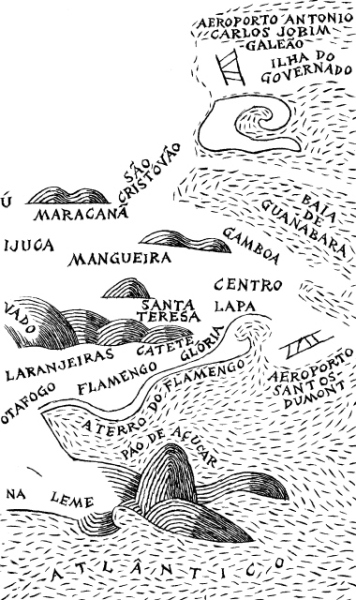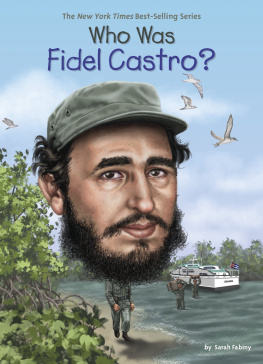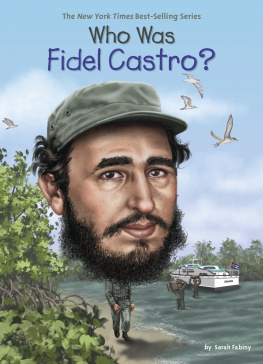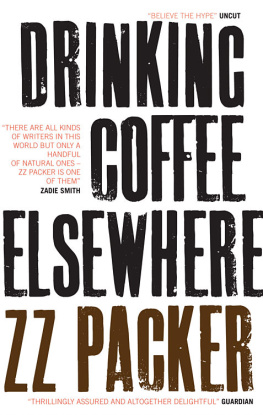
Bossa Nova:
The Story of the Brazilian Music that Seduced the World
Garrincha:
The Triumph and Tragedy of Brazils Forgotten
Footballing Hero
Rio de Janeiro
Carnival under Fire
Ruy Castro
Translated by John Gledson
BLOOMSBURY
First published in Great Britain 2004
Copyright 2003 by Ruy Castro
Translation copyright 2004 by John Gledson
First published in Brazil by Companhia das Letras as Carnaval No Fogo in 2003
This electronic edition published 2010 by Bloomsbury Publishing Plc
The right of Ruy Castro to be identified as the author of this work has been asserted by him in accordance with the Copyright, Designs and Patents Act 1988
All rights reserved. You may not copy, distribute, transmit, reproduce or otherwise make available this publication (or any part of it) in any form, or by any means (including without limitation electronic, digital, optical, mechanical, photocopying, printing, recording or otherwise), without the prior written permission of the publisher. Any person who does any unauthorised act in relation to this publication may be liable to criminal prosecution and civil claims for damages.
Bloomsbury Publishing Plc, 36 Soho Square, London W1D 3QY
A CIP catalogue record for this book is available from the British Library
ISBN 978 1 4088 2072 8
www.bloomsbury.com/ruycastro
Visit www.bloomsbury.com to find out more about our authors and their books.
You will find extracts, authors interviews, author events and you can sign up for newsletters to be the first to hear about our latest releases and special offers.
To the Ruas Paissandu and Baro do Flamengo
CONTENTS
In the last week of February 2003, gangsters linked to the drug traffic unleashed a wave of violence in Rio. They set fire to buses in the citys outskirts, had shoot-outs with the police in the favelas, and set off cinema-type car chases on the motorways. The city became apprehensive. Carnival was round the corner, and Rio was expecting hundreds of thousands of tourists. The hotels had a record number of bookings, the weather forecast predicted five days of sunshine hot enough to melt a cathedral, and the cariocas had already sold their souls to Brahma a beer brand, not a god. In the vital process of working themselves up for the big show, Carnival groups were already on the streets, though according to the calendar the holiday hadnt yet begun.
On the Monday before Carnival, in a reprisal for the toughening of their bosss prison conditions, young louts on motorcycles tried to force shopkeepers in some neighbourhoods to shut their premises. Five months earlier, in September 2002, theyd already successfully done this. But this time, the city adopted Hemingways motto when threatened by elephants: elegance under pressure. Not all the shopkeepers obeyed orders. And there were other, very carioca forms of resistance.
In Ipanema, just as two gangsters, somewhat more daring than the others, were trying to make a supermarket pull down its doors, the samba group Vem Ni Mim Que Sou Facinha [Harass Me, Im Willing] was getting ready to start up in its home base fifteen yards away, the little nameless square in front of the Zig-Zag bar, near the Praa General Osrio. The Facinha wasnt going to let anything get in the way of its Carnival. One of the participants was stretching out a banner calling people together; another was checking the sound equipment; a third was organising the sale of T-shirts with the groups logo on them; yet another had charge of a crucial part of the operation jamming cans of beer into enormous ice-filled polystyrene containers. When everything was ready, the beautiful, black, stout seventy-year-old Tereza, the Facinhas flag-bearer, gave two steps forward with her banner. The tambourines rattled, and hundreds of people launched into the samba written for that year by the groups composers. When they heard the song, with words all about happiness and good vibes, it may have been that, for many of the tradesmen on the block, life had returned to normal and, while at other times they might have given in to the gangsters pressure, they changed their minds and opened their doors. The club leapt and danced all night. Carnival, as always, had re-established the moral balance.
It was perfect. In the five days of Carnival proper, around 200 groups and bands paraded through Rios streets, with more than a million people in their wake. In the Sambodrome, the samba schools put on a show of an extravagance and euphoria not seen for many years. In every area of the city, even those where conflict was a way of life, the dances in the open squares kept masses of people going till dawn. The city nearly drowned in feijoada (the traditional dish of black bean stew) thered never been so much, in the restaurants or the hotels. The happiness and high jinks drowned out the headlines speaking of violence and fear. The presence of the army ensured that every carioca had the right to his or her Carnival.
In those few days, Rio welcomed 400,000 tourists who, when they were asked by the research institutes about the violence question, said theyd seen nothing out of the ordinary. Spread around the processions, dances, parties and junketings, they had a great time, took their clothes off like the natives, kissed each other in their millions, made love, laughed and fell head over heels for each other; at last they understood what Carnival in Rio was. Long after Ash Wednesday, most of them were still around. Theyd never seen anything like it.
Even for the cariocas, who for centuries have been putting this spectacle on and starring in it, Carnival 2003 was one for the record books. It was Carnival under fire but there was nothing new about that. Thats the way Rio has lived during the centuries of its history and not just in February.
Two or three Decembers ago, Marize Arajo, a Brazilian advertising executive living in Lisbon, came to spend the Christmas and new year holidays in Rio. A mutual friend of ours, the architect Ana Luiza Pinheiro, went to pick her up at Galeo airport. Marize is carioca and she held an unusual record for carioca expatriates: she hadnt been back to the city for three years. It was a daytime flight, but it was dark by the time the plane had landed. Half an hour later, happily chattering away to Ana Luiza on her way to Ipanema, she hadnt the least idea that in a short while, she would have the greatest reception of her life the greatest that any carioca could have imagined.
The car came through the two halves of the Rebou as tunnel and, at the very moment when the vision of the Rodrigo de Freitas lagoon opened out in front of her, fireworks shot into the sky, bursting in coloured lights mirrored in the still water. Marize was shocked. That in itself would have been a terrific welcome, but if the display programmer had been the devil himself equipped with a battery of computers, the result couldnt have been more infernal. Along with the fireworks, layer upon layer of mini lights, two and a half million of them, lit up a huge Christmas tree, floating right in the middle of the lagoon. And, at the same time, the fanfares of a symphony orchestra playing Cidade maravilhosa Rios euphoric anthem, came out of loudspeakers among the clouds. Almost breathless, tears gushing out, Marize asked Ana Luiza to stop the car she wanted to see and hear the spectacle the city had prepared for her.
It was an accident, of course. Her arrival had merely coincided with the opening ceremony for the Christmas tree that, for some years now, a company has been setting afloat in the lagoon in early December. The fireworks and the orchestra playing
Next page











